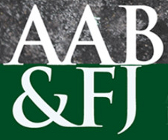Abstract
While understandings and applications of accounting concepts in convict, colonial Australia produced economic consequences, these notions also shaped social perceptions and generated social outcomes. Presenting a microhistorical study of early convict transportee George Best, the research demonstrates how conceptualisations of accounting, together with rudimentary accounting measures and accountability reports, were implicated in the construction of notions of this convict’s success and respectability. The relevant historical economic, political, and social environment, as well as modern-day historians’ opinions and interpretations, are shown to interact with the use made and significance of accounting concepts, such as wealth, profit, assets and capital, in the selected convict’s transfigurement from an individual of the ‘criminal class’ to wealthy, well respected landholder. Utilising a plurality of philosophical perspectives to derive meaning from the data, the study revealed that rather than the application of accounting concepts serving merely to perpetuate social class, it functioned to emancipate this convict, both literally and figuratively, as well as to enable privilege.
Keywords: Accounting concepts, accounting history, microhistory, Colonial Australia, accountability, social constructions, critical theory
How to Cite:
Bisman, J., (2007) “Accounting concepts in the construction of social status and privilege: a microhistorical study of an early Australian convict”, Australasian Accounting, Business and Finance Journal 1(4), 1-15. doi: https://doi.org/10.14453/aabfj.v1i4.1
Downloads:
Download PDF
47 Views
4464 Downloads

